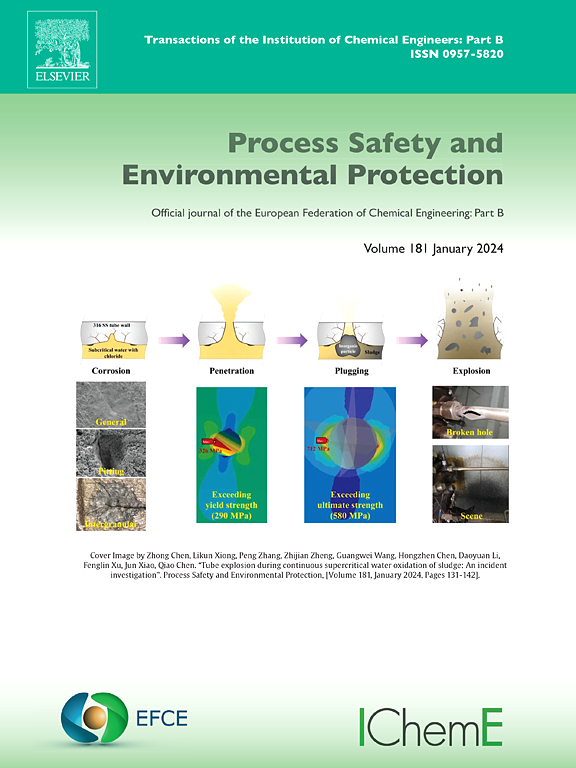畜牧业碳排放公平与效率耦合的评估框架:来自中国的证据
IF 7.8
2区 环境科学与生态学
Q1 ENGINEERING, CHEMICAL
引用次数: 0
摘要
本研究通过公平(人人平等、居民收入和农业用地容量)和效率(经济、技术和养分供应)的耦合视角,建立了畜牧业碳排放的综合评估框架。在此框架下,本研究系统分析了CELI公平与效率耦合的时空特征、区域差异和关键驱动因素。结果表明,中国的CELI效率呈持续上升趋势,特别是在发达地区,其效率超过了全国平均水平。然而,CELI不平等在大多数地区仍然普遍存在,在欠发达地区的不平等程度最高。各省CELI公平与效率耦合水平总体上处于低耦合水平和基本耦合水平。值得注意的是,在畜牧业最集中的地区,耦合水平最低。城镇化水平的持续提高是抑制CELI公平与效率耦合的关键因素,而人口增长和居民收入的增加对大多数省份的CELI公平与效率耦合具有正向影响。该框架有助于更合理地评估畜牧业的碳排放特征,为其他国家制定低碳农业发展政策提供有价值的参考。本文章由计算机程序翻译,如有差异,请以英文原文为准。
An assessment framework for the equity and efficiency coupling of livestock industry carbon emissions: Evidence from China
This study established a comprehensive assessment framework for carbon emissions from the livestock industry (CELI) through a coupled perspective of equity (equality for all, resident income, and agricultural land capacity) and efficiency (economy, technology, and nutrient supply). Based on this framework, the study systematically analyzes the spatio-temporal characteristics, regional disparities, and key driving factors underlying the coupling of CELI equity and efficiency. The results indicate that CELI efficiency in China has shown a continuous upward trend, particularly in the developed regions, where it exceeds the national average. However, CELI inequality remains widespread across most regions, with the highest levels observed in less developed areas. The levels of CELI equity and efficiency coupling in all provinces are generally located at low and basic coupling levels. Notably, the coupling level is the lowest in the regions with the most concentrated livestock industry. Continuously rising urbanization is the key factor inhibiting CELI equity and efficiency coupling, whereas population growth and increasing resident income had positive effects in most provinces. Our framework contributes to a more reasonable assessment of the carbon emission characteristics of livestock industry, and provides valuable references for the formulation of low-carbon agricultural development policies in other countries.
求助全文
通过发布文献求助,成功后即可免费获取论文全文。
去求助
来源期刊

Process Safety and Environmental Protection
环境科学-工程:化工
CiteScore
11.40
自引率
15.40%
发文量
929
审稿时长
8.0 months
期刊介绍:
The Process Safety and Environmental Protection (PSEP) journal is a leading international publication that focuses on the publication of high-quality, original research papers in the field of engineering, specifically those related to the safety of industrial processes and environmental protection. The journal encourages submissions that present new developments in safety and environmental aspects, particularly those that show how research findings can be applied in process engineering design and practice.
PSEP is particularly interested in research that brings fresh perspectives to established engineering principles, identifies unsolved problems, or suggests directions for future research. The journal also values contributions that push the boundaries of traditional engineering and welcomes multidisciplinary papers.
PSEP's articles are abstracted and indexed by a range of databases and services, which helps to ensure that the journal's research is accessible and recognized in the academic and professional communities. These databases include ANTE, Chemical Abstracts, Chemical Hazards in Industry, Current Contents, Elsevier Engineering Information database, Pascal Francis, Web of Science, Scopus, Engineering Information Database EnCompass LIT (Elsevier), and INSPEC. This wide coverage facilitates the dissemination of the journal's content to a global audience interested in process safety and environmental engineering.
 求助内容:
求助内容: 应助结果提醒方式:
应助结果提醒方式:


